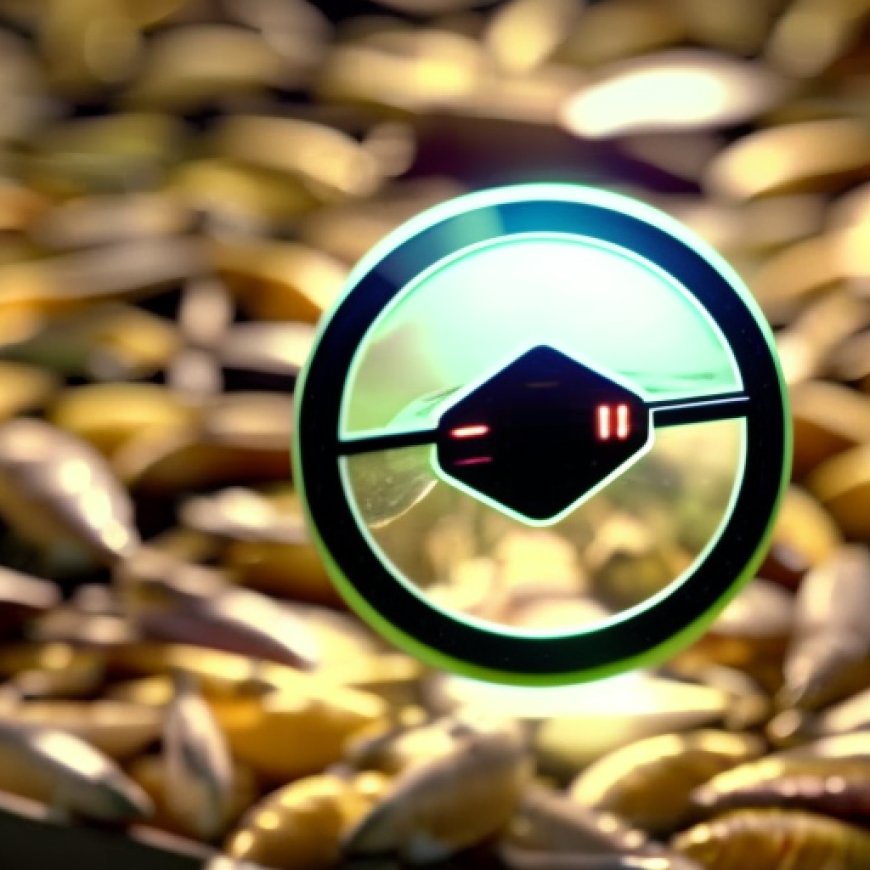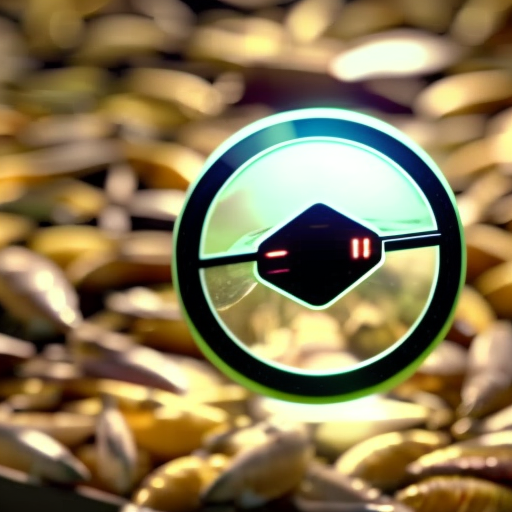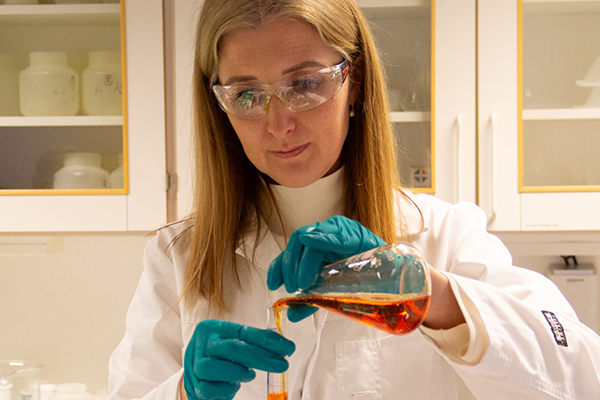Circular economy: New tech turns fish waste into valuable pharma and cosmetic ingredients – Responsible Seafood Advocate
Circular economy: New tech turns fish waste into valuable pharma and cosmetic ingredients - Responsible Seafood ... Global Seafood Alliance


New tech could convert fish byproducts into high-demand ingredients like collagen and gelatin, promoting a circular economy

Date: 26 April 2024
Author: Responsible Seafood Advocate
A research team is developing technologies to better utilize fish residues, particularly fish skin, for producing collagen and gelatin. These high-demand ingredients are crucial in the pharmaceuticals, dietary, nutrition and cosmetic industries, where they are used in the manufacture of creams, capsules, powders and jellies.
These industries often experience shortages in marine raw materials. But tapping into over a million tons of fish byproducts – rich in omega-3 oils, collagen and gelatin – could alleviate shortages in the food and cosmetic industries and create new jobs.
“Fish-derived collagen is often of higher quality and enables people who don’t eat meat to enjoy products containing gelatin,” said Rasa Slizyte, a senior research scientist at SINTEF Ocean. “If we optimize our exploitation of whitefish residues, we can produce more than 6,500 tons of gelatin from fish skin every year.”
Project: SUPREME
The research is part of a project called SUPREME, led by SINTEF Ocean in collaboration with several research partners, including the Norwegian University of Science and Technology (NTNU) and the Technical University of Denmark (DTU).
Challenges in Utilizing Fish Byproducts
Even if the whitefish sector can supply large volumes of fish skins, there are challenges. Many fishing vessels have limited space on board and not all are equipped to supply fresh, high-quality raw materials or to freeze them, which is essential to avoid quality deterioration.
New Preservation Technologies
The SUPREME project has involved testing various preservation technologies, such as freezing, salting, and low-pH techniques. All of these methods produced satisfactory results, with high gelatin yields and good compositions of amino acids.
Utilizing Salmon Skin and Backbones
Salmon skin and backbones, rich in collagen, could also be much more effectively utilized than they currently are. As part of an EU-funded project called DAFIA, SINTEF researchers have been working to develop a multi-stage processing technology that incorporates gentle heat treatment to break down the skin or backbones and remove the muscle fraction. This makes it possible to extract as much as 90 percent of the oil.
Promoting a Circular Economy
These new technologies are promising because several high-quality products can be made from the same materials. Marine oils, which spoil easily, can be preserved by adding antioxidants and sealing them in capsules. Proteins such as gelatin, used in the capsules, also help cover up any bad smells or tastes.
“These projects demonstrate that it’s entirely possible to make use of all fish raw materials,” says Slizyte. “We’ve completed our investigations of whitefish and salmon, so now it’s herring’s turn.”
Now that you’ve reached the end of the article …
… please consider supporting GSA’s mission to advance responsible seafood practices through education, advocacy and third-party assurances. The Advocate aims to document the evolution of responsible seafood practices and share the expansive knowledge of our vast network of contributors.
By becoming a Global Seafood Alliance member, you’re ensuring that all of the pre-competitive work we do through member benefits, resources and events can continue. Individual membership costs just $50 a year.
Not a GSA member? Join us.
Support GSA and Become a Member
Tagged With
Related Posts
SDGs, Targets, and Indicators
-
SDG 12: Responsible Consumption and Production
- Target 12.2: By 2030, achieve the sustainable management and efficient use of natural resources.
- Indicator: Fish byproducts are utilized to produce collagen and gelatin, reducing waste and promoting a circular economy.
-
SDG 8: Decent Work and Economic Growth
- Target 8.5: By 2030, achieve full and productive employment and decent work for all women and men, including for young people and persons with disabilities, and equal pay for work of equal value.
- Indicator: Utilizing fish byproducts to create new jobs in the food and cosmetic industries.
-
SDG 14: Life Below Water
- Target 14.7: By 2030, increase the economic benefits to small island developing states and least developed countries from the sustainable use of marine resources, including through sustainable management of fisheries, aquaculture, and tourism.
- Indicator: Efficient utilization of fish byproducts to alleviate shortages in the food and cosmetic industries, reducing the need for additional marine resources.
Table: SDGs, Targets, and Indicators
| SDGs | Targets | Indicators |
|---|---|---|
| SDG 12: Responsible Consumption and Production | Target 12.2: By 2030, achieve the sustainable management and efficient use of natural resources. | Fish byproducts are utilized to produce collagen and gelatin, reducing waste and promoting a circular economy. |
| SDG 8: Decent Work and Economic Growth | Target 8.5: By 2030, achieve full and productive employment and decent work for all women and men, including for young people and persons with disabilities, and equal pay for work of equal value. | Utilizing fish byproducts to create new jobs in the food and cosmetic industries. |
| SDG 14: Life Below Water | Target 14.7: By 2030, increase the economic benefits to small island developing states and least developed countries from the sustainable use of marine resources, including through sustainable management of fisheries, aquaculture, and tourism. | Efficient utilization of fish byproducts to alleviate shortages in the food and cosmetic industries, reducing the need for additional marine resources. |
Analysis
The article highlights the development of technologies to utilize fish residues for producing collagen and gelatin, which are high-demand ingredients in various industries. This aligns with SDG 12: Responsible Consumption and Production, specifically Target 12.2, which aims to achieve the sustainable management and efficient use of natural resources. By utilizing fish byproducts, the article promotes a circular economy and reduces waste.
The article also mentions that the utilization of fish byproducts could alleviate shortages in the food and cosmetic industries and create new jobs. This relates to SDG 8: Decent Work and Economic Growth, particularly Target 8.5, which aims to achieve full and productive employment and decent work for all. By creating new jobs in these industries, the utilization of fish byproducts contributes to economic growth and employment opportunities.
Furthermore, the article discusses how efficient utilization of fish byproducts can reduce the need for additional marine resources, aligning with SDG 14: Life Below Water. Specifically, Target 14.7 aims to increase the economic benefits from the sustainable use of marine resources. By utilizing fish byproducts to alleviate shortages, the article promotes the sustainable management of fisheries and reduces the pressure on marine resources.
Copyright: Dive into this article, curated with care by SDG Investors Inc. Our advanced AI technology searches through vast amounts of data to spotlight how we are all moving forward with the Sustainable Development Goals. While we own the rights to this content, we invite you to share it to help spread knowledge and spark action on the SDGs.
Fuente: globalseafood.org

Join us, as fellow seekers of change, on a transformative journey at https://sdgtalks.ai/welcome, where you can become a member and actively contribute to shaping a brighter future.







